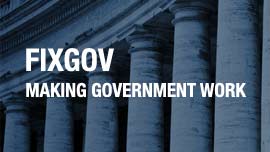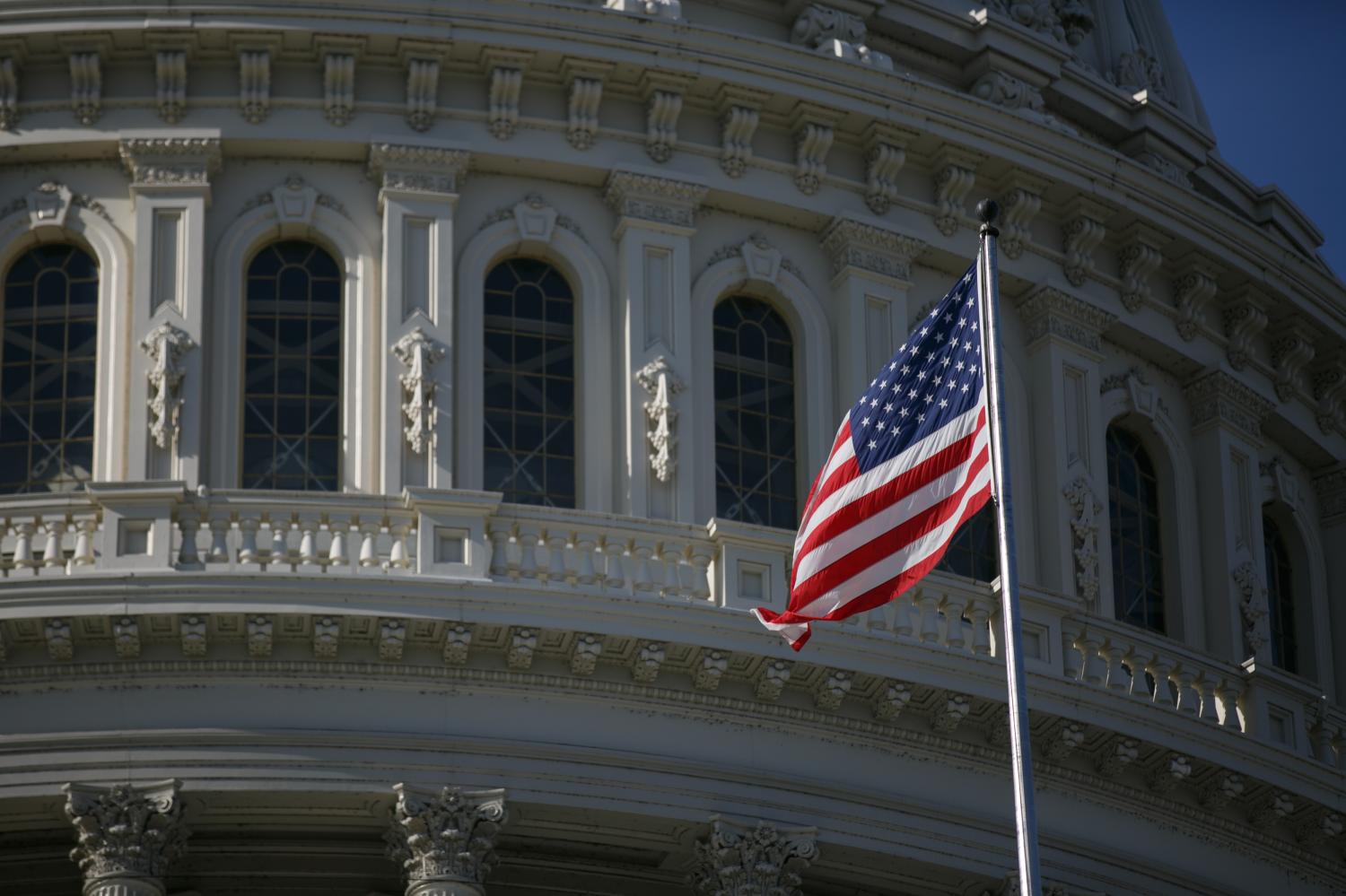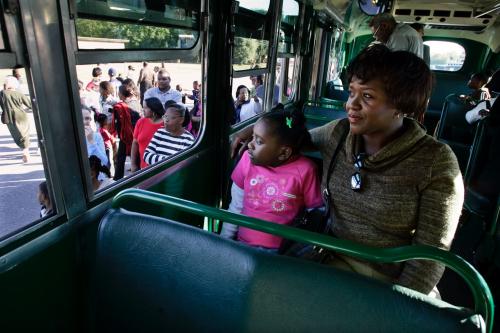This article is part of the “Monitoring the pillars of democracy” series. It focuses on the seven pillars essential to defending democracy, as outlined in the Brookings Democracy Playbook 2025 published by the Anti-Corruption, Democracy, and Security (ACDS) project. The series includes research and commentary on actionable steps democracy actors can take to strengthen democratic institutions and protect freedoms in the U.S. and abroad.
As U.S. elections have come increasingly under threat in recent years— including from misinformation, unlawful certification refusals, and legislation that disenfranchises groups of voters—it is more vital than ever that state elections are able to run fairly and without interference. While much attention is paid to federal elections, less is given to the administration of so-called down-ballot races, such as state gubernatorial, legislative, and judicial elections. However, these and other state-level elections (including for other down-ballot offices such as attorneys general and secretaries of state) have a significant impact on the lives of everyday Americans.
Safe, free, and fair elections, including at the state level, are a critical pillar of a functioning American democracy.
In this article, we focus specifically on the down-ballot races for state legislature, governor, and supreme court that have taken and will take place in 2025, selecting those that are most critical to monitor for potential election subversion and for voter suppression. We limited the dataset to these most high-profile statewide elections because of their relative importance and therefore relatively increased susceptibility to subversion and suppression. We also included three other discrete races that met that threshold for the sake of completeness: the Lieutenant Governor races in New Jersey and Virginia, and the attorney general race in Virginia. With respect to election subversion, we selected races that could change the balance of power. With respect to voter suppression, we selected states that have passed new and suppressive legislation between 2021 and 2025 that remains in effect. We here follow Professor Lisa Marshall Manheim’s definition of election subversion as “the exploitation of a breakdown in the rule of law to install a candidate into elected office.” Voter suppression (creating access challenges to voting) is often considered the other side of the coin of election subversion, and we therefore separate the two here to highlight both complementary challenges.
In sections 1 and 2, we examine the 232 races for state legislature, governor, and supreme court in 2025 post-May 1 that have yet to take place across 15 states, including special elections.
In section 1, we specifically focus on the subset of those races that we have identified as higher risk for election subversion; in section 2, we look at the races that have the highest propensity for voter suppression. Pennsylvania and Virginia elections fall under both categories, and so increased attention should be paid to races in those states.
Section 1: Risk of election subversion
Of the races taking place after May 1, 2025, 189 elections across four states could change the balance of power in those states. These are concentrated in two states, with all 80 seats of the General Assembly in New Jersey and all 100 seats of the House of Delegates in Virginia up for election this year. The General Assembly in New Jersey and the House of Delegates in Virginia each represent one of the two legislative bodies in their respective states, meaning their make-up following the elections could keep or break a unified state legislature.
Outcome-determinative races often garner more attention and thus are often more prone to election subversion. In some states, such as New Jersey, where the gubernatorial and legislative branches are currently under Democratic control, a change in party control could make or break a trifecta. States that fall both within the election subversion category and which have also been identified as having a higher propensity for voter suppression (see subsequent section) are highlighted below in orange.
The elections for governor and for the 80 seats of the New Jersey General Assembly in 2025 have the potential to change the balance of power. In addition to being outcome-determinative races, New Jersey gubernatorial elections have previously been targets of election subversion. Two of the leading primary candidates have supported election subversion. Jack Ciattarelli, also a candidate in 2021, participated in a “stop the steal” rally after the 2020 presidential election. Following his own gubernatorial loss, he failed to concede the election results for ten days amid widespread misinformation and false fraud allegations. Bill Spadea publicly posted his support for the pardoning of the January 6 participants. Spadea and Ciattarelli are in the lead in polls.
State assembly elections have not previously faced the same level of malfeasance. However, they merit attention to ensure that remains the case in 2025.
In Pennsylvania, three of the state’s seven supreme court seats are up for retention elections on November 4, 2025. In Pennsylvania, justices are initially elected for 10-year terms in a partisan election. Following those 10 years, a yes/no vote is held for retention. If a justice loses the retention vote, an interim replacement nominee is selected by the governor and approved by the Pennsylvania State Senate until a partisan election can be held in the next odd-numbered year. While retention elections are intended to be nonpartisan, both parties are already beginning to look toward the Pennsylvania election.
Certification has historically been a large concern in Pennsylvania, where we previously identified 12 counties ranging from “high concern” to “worth watching” in terms of their propensity for refusing to certify the November 2024 presidential election. Pennsylvania was also a hotspot for social media misinformation, with PeakMetrics finding that 61% of posts across the seven battleground states discussing election fraud on Election Day in 2024 were focused on Pennsylvania (over 180,000).
Virginia’s governor and House of Delegates seats will also be up for election in 2025. The 2023 election cycle for the House faced high levels of misinformation, particularly in the north of the state. Disinformation also took hold in the November 2024 presidential election in Virginia, particularly related to false claims of non-citizen voting. Campaign funding and attention are already flowing into the state for these races.
Michigan’s Senate District 35 presents an interesting case, with the seat having the propensity to shift the Senate from a 19-18 Democratic majority to a 19-19 tie. The race has yet to be scheduled for the seat representing 270,000 people. The delay has led to Governor Whitmer receiving criticism for not setting the election date, though she has said that a race will proceed.
Losing candidates should concede their races and quash any claims of cheating from supporters. In addition, those involved in the ministerial and mandatory duty to certify election results should continue to do so.
Section 2: Risk of voter suppression
Thirty-two races scheduled between May 1, 2025, and Jan. 1, 2026, show the highest potential for voter suppression, primarily due to restrictive legislation. As above, states that have a higher propensity for both election subversion and voter suppression are highlighted in orange.
One of the elections to keep the closest eye on will be New Hampshire’s State House District Strafford 12, which will take place on June 24, 2025. Attention is merited due to a new law that took effect following the November 2024 presidential election. Instead of being able to sign an affidavit attesting to citizenship, the law requires a photo ID or other documentation in order to vote. The impacts were first seen in local elections on March 11, 2025, where at least 96 individuals were turned away from the polls, including married women who changed their last names. The law is being challenged in courts but is particularly notable given that more than a dozen states are considering similar legislation.
Elections in Alabama have recently faced increasing voter suppression, and with two Alabama state legislature seats up for election in the second part of 2025, these are important to note. At least two recent bills have increased barriers to voting in Alabama: H.B. 285, which prohibits curbside areas for casting ballots as well as most voting machines outside of polling locations; and S.B. 1, which made it illegal in most cases to assist another individual in applying for an absentee ballot.
Both Alabama and Virginia saw voter purges in advance of the November 2024 election, both attempted during the so-called quiet period (within 90 days of the election). In Virginia, the purge was initially blocked by a federal judge before being restored by the Supreme Court. In Alabama, the program was also blocked by a federal judge and was not in place for the election. While the secretary of state has halted the program and the suit was subsequently voluntarily dropped, the plaintiffs remain ready to take action if the program is restarted.
Louisiana—in which State House District 67 is up for election on June 7—enacted a series of laws in summer 2024 that could create challenges for voters. Several of these, including H.B. 476, S.B. 218, S.B. 155, and H.B. 581, create restrictions on absentee ballots that Disability Rights Louisiana alleges violate Section 208 of the Voting Rights Act, though the group found no instance in November 2024 in which the enforcement of the provisions caused an individual with a disability to not have their vote counted. Other recent measures in the state include H.B. 506, which requires nonprofits to sign up with the Louisiana secretary of state prior to any voter registration drives, increasing the barriers to register prospective voters.
Florida will see two Senate and three House special elections in 2025. Their 2023 law, S.B. 7050, makes voter suppression in future elections in the state a concern, as it makes voter registration more complex, restricts mail-in voting, and increases list maintenance requirements that could lead to voter purges. There are ongoing legal challenges to various elements of the law.
Another state to watch is Pennsylvania, which had the most suits of any state (36) in the lead-up to the November 2024 election according to Democracy Docket. The Pennsylvania Department of State referred to several of these as “bad faith challenges.” Many targeted mail-in and absentee ballots. The state’s ballot notice and cure laws, which differ by county, make it such that voters in 16 counties whose mail-in ballots are rejected for any reason will not be notified and given a chance to correct the error. This disproportionately impacts communities of color, whose mail-in ballots have been found to be rejected at higher rates for simple mistakes than those of white individuals.
In South Carolina, S108 was signed into law in 2022 and made absentee voting more difficult by narrowing the qualification criteria for an absentee ballot, increasing the information required on the application, and banning the use of drop boxes in the state.
While two recent laws in Mississippi—S.B. 2576 and H.B. 1406—increased access to the polls by expanding voter ID options, removing affidavit requirements, and establishing a notice-and-cure process for mail-in ballots, the state remains one of the most restrictive. (Elections in Mississippi have yet to be scheduled but are currently anticipated for November 2025.)
In Missouri, the 2022 omnibus H.B. 1878 was quite restrictive, but some portions of it have been overturned while others remain active. While Judge Beetem upheld the voter ID portion in a November ruling, the same judge permanently enjoined four other provisions of the law.
Though it is often difficult to quickly determine the exact causal impact of a new piece of restrictive legislation on voter turnout, these races and states present opportunities for increased vigilance and areas for future study.
Conclusion
Elections, including at the state level, are a fundamental component of American democracy, but they have come under threat in various ways. As Jacob Grumbach analyzed in his State Democracy Index 2.0 (SDI 2.0), electoral democracy in the states was strong in the 2000s but began to decline in the 2010s. Recent data shows an uptick in electoral democracy scores in 2023 compared to 2018, but levels still remain well below those in the 2000s (data for 2024 and 2025 are not yet available in the SDI 2.0 analysis). Given the decline since the 2000s and the possibility of state electoral recovery in 2023, it is crucial to continue analyzing the health of state down-ballot elections. The races identified in this piece should be monitored to ensure they remain or become safe, free, and fair. As elections proceed throughout 2025, pro-democracy actors must ensure that this standard is upheld.
-
Acknowledgements and disclosures
The authors would like to thank Peter Beck and Gigi Liman for research support; Julianna Melendez, Finnbarr O’Reilly, Madison Gee, and Eric Urby for fact-checking and copyediting assistance; and Jordan Muchnick and Eric Urby for editorial assistance.
The Brookings Institution is committed to quality, independence, and impact.
We are supported by a diverse array of funders. In line with our values and policies, each Brookings publication represents the sole views of its author(s).







Commentary
US down-ballot races in 2025 deserve close attention
April 30, 2025